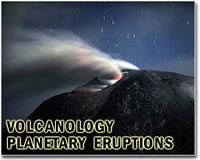| . |  |
. |
Legaspi, Philippines (AFP) Dec 31, 2009 Nearly 50,000 Philippine villagers are likely to spend the first few months of 2010 in evacuation centres amid concerns the Mayon volcano will erupt, officials said Thursday. Chief government volcanologist Renato Solidum warned that although Mayon appeared to be in a lull after two weeks of spectacular lava flows and ash sprays, technical instruments showed a major eruption could occur any time. "The volcano is still active. The danger is still there. So currently the alert level is still maintained at level four," Solidum told the ABS-CBN television network. Alert level four means a major eruption could take place within days. The government has already evacuated 47,000 villagers whose homes are in an eight-kilometre (five-mile) danger zone around Mayon, and they are facing a bleak start to 2010 living in nearby schools and tents. "We are preparing for (the villagers to spend) up to three months in evacuation centres," Cedric Daep, disaster relief coordinator for Albay province where Mayon is located, told AFP. He cited the experience of eruptions in 1993, 2001 and 2006, which also forced thousands of people to stay in evacuation centres for months. Villagers this time are being housed in 29 centres, most of which are in schools, and the evacuees are being forced to rely on relief goods from the Philippine government as well as international donor agencies. Daep told AFP that the provincial government and various charities would distribute special New Year's Eve food packs so the people in evacuation centres could still enjoy traditional celebrations. A major telecoms company was also sponsoring a New Year's concert for the evacuees. But when school resumes after the end of the holidays, the government will have to find a way to accommodate both students and displaced people, Daep said. He said some classrooms would be left for the students, and schools would resort to using different shifts to handle more classes. Housewife Prime Mendevil, 49, who was evacuated from her home in the foothills of Mayon with her farmer husband, complained of tough conditions in one of the schools. "My back has become sore from sleeping on cold cement floors with just a mat to protect it," she told AFP as a charity group distributed party horns to children so they could celebrate the New Year. The food rations of rice and canned goods were sometimes inadequate and supplies of water had given some people stomach aches, Mendevil added. "We want to go home but we follow the orders of the government. We don't want to be stubborn so we follow even if life is hard in the evacuation centre," she said. However she admitted that sometimes her husband or her 30-year-old son sneaked back into the danger zone to make sure their chickens were still cared for and that their home had not been ransacked. The 2,460-metre (8,070-foot) volcano, which is about 330 kilometres (200 miles) southeast of Manila, has erupted 48 times in recorded history. In 1814, more than 1,200 people were killed as lava buried the town of Cagsawa. A powerful typhoon dislodged tonnes of debris from Mayon's slopes in 2006, three months after an eruption, burying entire towns and killing over 1,000 people. strs-mm/kma/jah
Share This Article With Planet Earth
Related Links Bringing Order To A World Of Disasters When the Earth Quakes A world of storm and tempest
 Thrill-seeking tourists flock to Philippine volcano
Thrill-seeking tourists flock to Philippine volcanoLegaspi, Philippines (AFP) Dec 30, 2009 Thousands of tourists are flocking to the Philippines' restive Mayon volcano with many even risking their lives to get close to the spectacular flowing lava, authorities said Wednesday. Governor Joey Salceda, whose province of Albay includes Mayon, said 2,400 tourists a day had been pouring into the area since the famously active volcano started oozing lava on December 14, compared with abou ... read more |
|
| The content herein, unless otherwise known to be public domain, are Copyright 1995-2009 - SpaceDaily. AFP and UPI Wire Stories are copyright Agence France-Presse and United Press International. ESA Portal Reports are copyright European Space Agency. All NASA sourced material is public domain. Additional copyrights may apply in whole or part to other bona fide parties. Advertising does not imply endorsement,agreement or approval of any opinions, statements or information provided by SpaceDaily on any Web page published or hosted by SpaceDaily. Privacy Statement |